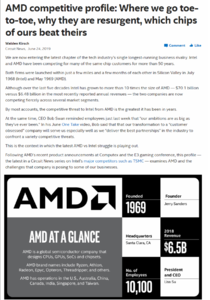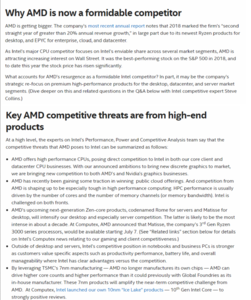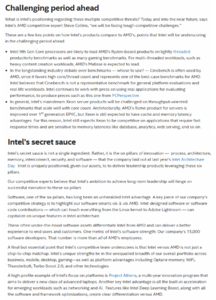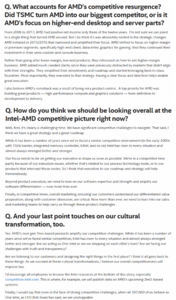cageymaru
Fully [H]
- Joined
- Apr 10, 2003
- Messages
- 22,074
Reddit user u/scv_good_to_go has released an internal Intel employee document from the company's Circuit News portal. Intel details how AMD recovered, became streamlined to focus on its core business, why the Intel ecosystem is still better, the future of the core wars, and much more!
TechPowerUp covered it and has some quotes from Intel employees at the end of their article on the topic.
Fixed Images! Click to enlarge.





TechPowerUp covered it and has some quotes from Intel employees at the end of their article on the topic.
Fixed Images! Click to enlarge.





Last edited:
![[H]ard|Forum](/styles/hardforum/xenforo/logo_dark.png)